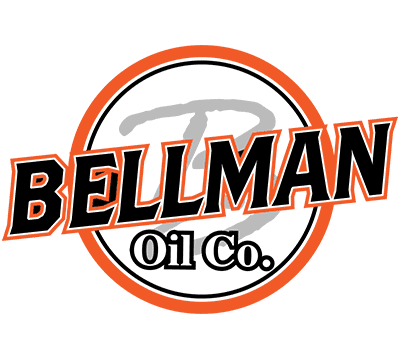In racing, every detail matters. Engine performance, durability, and consistency on the track can hinge on something as simple as the oil you choose. For racers and engine builders, one of the most common questions is whether to use break-in oil or go straight to full synthetic oil. Both have a role, but they serve very different purposes. Understanding when to use each one can protect your engine and maximize performance where it counts most.
What is break-in oil?
Break-in oil is specially formulated for the critical first hours of an engine’s life. When a new or rebuilt engine runs for the first time, components such as piston rings, camshafts, and bearings are wearing into place. This period, called the break-in, is essential for establishing proper sealing and long-term durability.
Unlike standard motor oils, break-in oils typically contain high levels of zinc and phosphorus (ZDDP). These anti-wear additives create a protective film on metal surfaces, reducing friction while still allowing controlled wear to help parts seat correctly.
Another difference is viscosity and detergent content. Break-in oils often have lower detergent levels compared to full synthetics. This is intentional, as too much detergent during break-in can wash away additives before they do their job. The goal isn’t long-term cleanliness yet; it’s controlled conditioning of new metal surfaces.
It’s important to note that break-in oil is a temporary lubricant, not intended for long-term use. Long-term use is associated with damage to catalytic converters. It’s designed for the short but crucial break-in window.
What is full synthetic oil?
Full synthetic oil, on the other hand, is engineered for maximum protection and performance once the engine is fully seated. Unlike mineral or conventional oils, synthetic oils are chemically refined to have uniform molecules that resist breakdown under extreme heat and stress.
For racers, this means:
- Consistent lubrication at high RPMs and temperatures.
- Oxidation resistance, reducing sludge and deposits.
- Improved flow at low temperatures, ensuring quicker protection during cold starts.
- Extended oil life, especially under demanding racing conditions.
Synthetic oil is widely regarded as the best long-term solution for high-performance engines. However, its superior slipperiness can actually work against a brand-new engine. By reducing friction too much during the break-in, synthetic oil can prevent piston rings from properly seating, which may result in blow-by, reduced compression, and long-term performance issues.
Why Racers Should Not Skip Break-In Oil
Racing engines are designed for extreme performance, but that doesn’t mean they can skip the fundamentals. One of the biggest mistakes a racer can make is filling a fresh engine with full synthetic oil before it has been properly broken in.
Here’s why:
- Piston ring seating: Break-in oil allows controlled friction that helps piston rings wear into the cylinder walls. Without proper seating, the engine may never achieve optimal compression, reducing horsepower and efficiency.
- Camshaft and lifter protection: High ZDDP levels in break-in oil protect flat-tappet camshafts and other high-stress surfaces during their most vulnerable stage.
- Preventing premature wear: Using synthetic oil too early can cause glazing on cylinder walls, leaving the engine unable to achieve the tight tolerances needed for racing performance.
In short, break-in oil lays the foundation for long-term performance. Skipping it may save a step, but it can cost dearly in the long run through reduced power output, higher oil consumption, and even catastrophic engine failure.
Transitioning to Full Synthetic
Once the engine has completed its break-in period, full synthetic oil becomes the clear choice for racers. But how do you know when to switch?
Typical Break-In Period
For most racing engines, the break-in period lasts between 500–1,000 miles, or a set number of run-hours if measured by track time. Engine builders may recommend shorter or longer intervals depending on the build.
Signs the Engine is Ready
Compression tests and oil analysis can help confirm that piston rings are seated and that wear metals have stabilized.
How to Switch
When transitioning, it’s best to drain the break-in oil completely and replace the filter before adding full synthetic. This prevents leftover contaminants from circulating once the engine is in long-term operation.
From that point forward, full synthetic oil should be the standard. Its superior heat resistance and lubrication properties make it the best option for engines operating under racing conditions.
Break-In Oil vs Full Synthetic: Side-by-Side
To summarize the key differences, here’s how the two compare:
Break-In Oil
- Purpose: Short-term use during initial engine run-in.
- Additives: High ZDDP for anti-wear protection.
- Role: Allows controlled wear for piston ring seating and camshaft protection.
- Duration: Typically 500–1,000 miles or a limited number of hours.
Full Synthetic Oil
- Purpose: Long-term protection for high-performance engines.
- Additives: Advanced detergents and stabilizers, lower ZDDP compared to break-in oils.
- Role: Protects against heat, friction, and deposits during sustained racing.
- Duration: Continuous use after break-in is complete.
The takeaway is clear: both oils have their place, but using them at the right time is what protects the engine and maximizes performance.
Racers are always chasing more speed, more reliability, and more wins. No matter how advanced the engine build, success still depends on fundamentals. Break-in oil and full synthetic oil are complementary. Break-in oil provides the controlled conditions needed to seat components properly, while full synthetic oil delivers the long-term protection required for high-stress racing.
The best strategy is to respect the break-in process, then make the switch to synthetic when the engine is ready. That way, you’re giving your engine the best chance to perform at its peak.
Partner with Bellman Oil!
Building or maintaining a high-performance engine? Bellman Oil provides the expertise and high-quality lubricants you need to keep your race team competitive. Contact our team today to learn more about the best oil strategy for your engine.




